Are you intrigued by the idea of a maintenance “free” e-bike with a belt drive? Is a belt drive best for an electric bike? It really comes down to your unique use case and personal budget. In this article, we are going to cover whether a belt-drive electric bike is right for your next bike, answer belt-drive frequently asked questions, and review the main belt-drive maintenance tips. Let’s dig into belt-drive electric bikes!
What is “Belt Drive” for Your E-Bike?
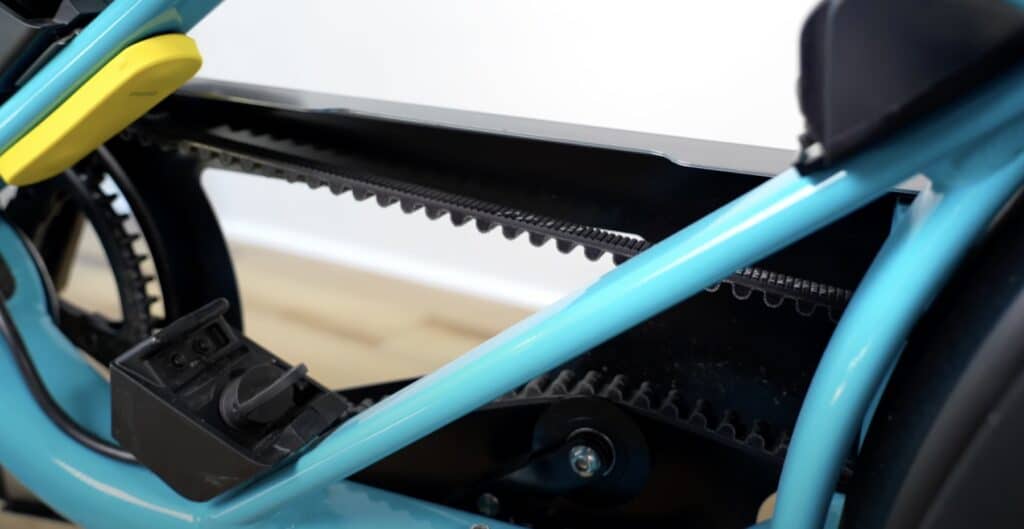
To put it simply, you have a carbon fiber belt instead of a chain on the drivetrain of your bike.
Belt drive technology is not new as it has been used in the engine of cars, motorcycles, and bikes for many years. It hasn’t been super popular for non-electric bikes because it adds weight, cost, and some drag to the drivetrain of the bike. Also, you need a specially designed frame for the belt to slip on since the belt is one piece. This means it isn’t easy to add after you own a bike unless it is designed for this to begin with. Finally, if you want gears then you’ll need an internally geared system because a belt does not work on a derailleur.
Belt-drive bikes have become more popular recently thanks to the increased interest in electric bikes and using electric bikes for transportation. Electric bikes really benefit from a belt drive system because the belts last much longer than chains with the high torque of mid-drive electric bikes. You often can get 1 belt to 2-3 chain replacements, or even more! You also have all the benefits of an internally geared hub! There isn’t a derailleur hanging off your bike, a chain to keep clean and lubed, and you can shift your bike at a stop with the internally geared system. This is very handy if you have a heavier electric or cargo bike!
The most popular brand of belt drive systems is from Gates and you’ll often hear belt drive and “Gates Carbon Drive” used interchangeably. It’s a huge company with a lot of their work coming from the automotive industry.
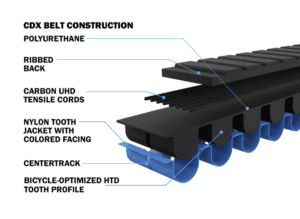
What is a Belt Drive Made Out Of?
The belt is made out of carbon fibers, and the front and rear cogs are made out of stainless steel. The belt is one piece and does not come apart so you have to have a special bike frame that allows for an opening in the frame for the belt to slide through.
Why You May Want a Belt Drive E-Bike
I asked on Twitter why people chose a belt-drive electric bike. The main reasons:
- A lot less week-to-week maintenance
- Longer intervals between needing to be replaced
- A cleaner drivetrain
- How quiet it is
Why You May NOT Want a Belt Drive E-Bike
- More expensive to get started
- Requires an internally geared system
- Special parts that not all shops keep in stock or know about
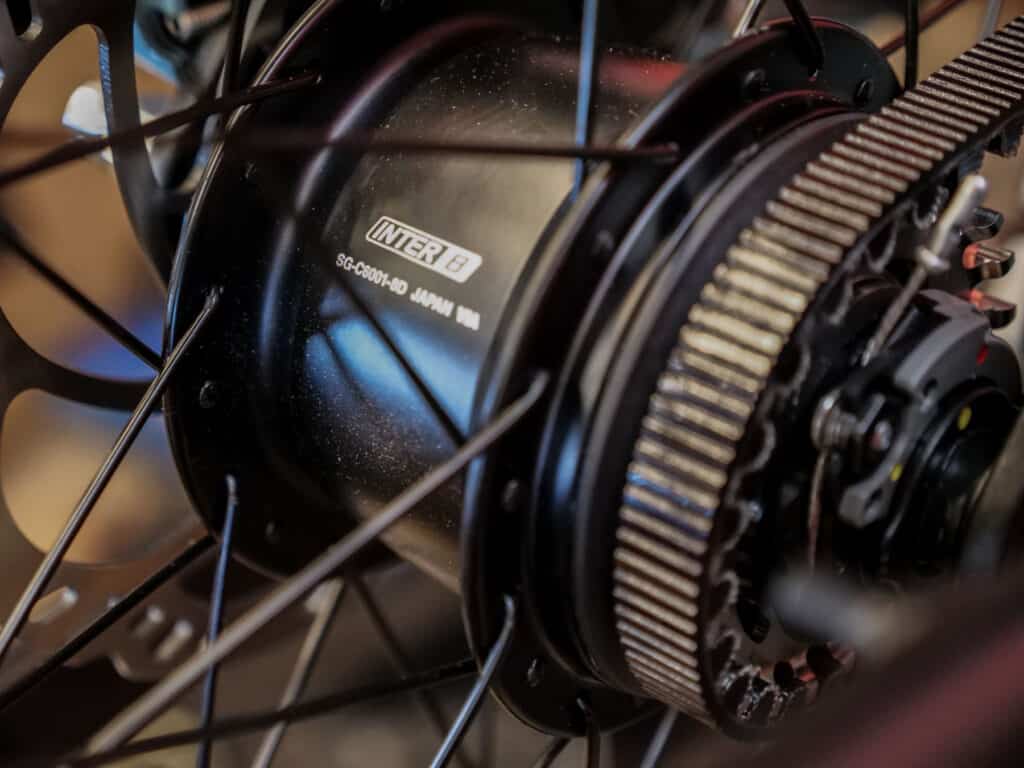
Most Common Belt Drive Service Problems
- Super dry areas can get dirt basically statically stuck to the belt. All you need to do is simply wash it off with plain water
- Some people try to use bike lube on the belt (Do not do this!)
- The belt is over or under tension
- When removing the rear wheel, not loosening the tension enough so the belt is under too much tension when you reinstall the wheel so you manipulate the belt, or walk it on like a chain. This can break the fibers in the belt causing it to fail prematurely.
Basic Maintenance for Belt Drive Electric Bikes
- If your belt is dusty or dirty – use water to gently wash it off
- In highly dusty areas, you can try a silicone spray that Gates recommends. Do not use bike lube!
- Every 200-500 miles you want to check that the belt is properly tensioned, and also check that your rear wheel is properly aligned and tight, and the sliding dropouts if you have them are tight and haven’t slipped forward. Depending on the bike, the main reason your belt tension changes is the bike and not the belt. This could be your wheel pulling forward, the tensioner wearing down, or something else.
- If you have a tensioner, check this for wear and that it is spinning freely, lube any bushing or bearing within it.
- A quick note, if you happen to be riding a new GSD Gen 2 cargo bike, all of your work will be done on the non-drive side in order to access the belt. On the normal drive-side where the belt is, there is a full chainguard covering it. This is removable but not necessary for normal maintenance like checking the tension or lubing your tensioner.
How to Check Tension on a Belt Drive E-Bike
This can be done either with a very fancy and expensive tool, or the free Gates Carbon Drive phone app. I personally recommend the app.
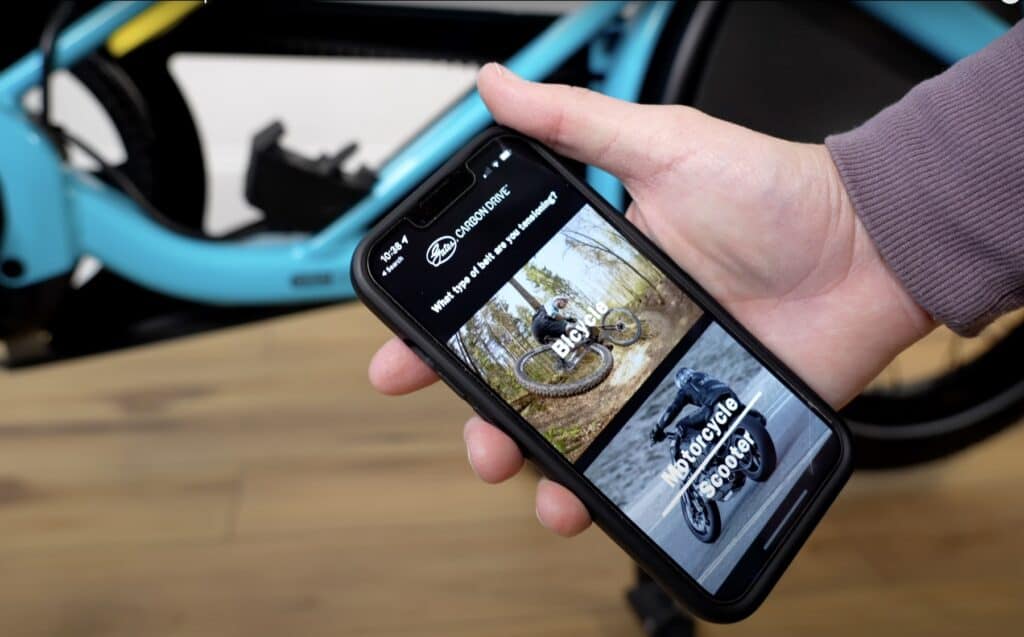
Set yourself up in a quiet place as it uses sound to check. Now you are going to pluck your belt like a guitar string. You do this in 3 different places on the belt. So pluck, rotate a bit, pluck again, rotate, etc. It then takes an average.
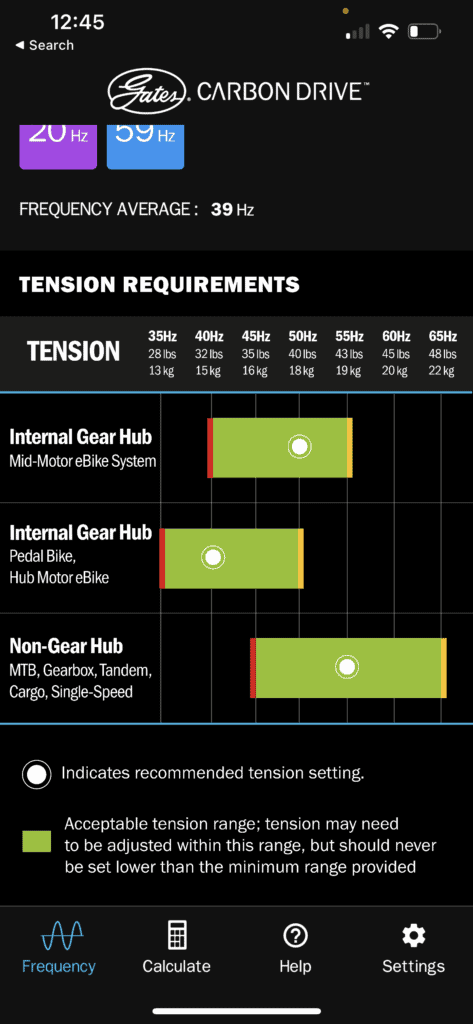
Depending on what type of bike and gear system you have you’ll be looking for different numbers. The most common range that I’m looking for is a internally geared hub with a mid-motor e-bike system, this range is 40-55Hz.
What to Know About Belt Drive Replacement Parts
I don’t believe this section will apply to most folks, but if you are looking to replace parts on your belt drive bike or have replacement parts at home just in case here are some things you need to know.

- The belt is a fixed piece and you’ll need to know how many teeth yours has, and which type of belt as there have been a few different ones over the years with a groove or “CenterTrack” in the middle and not.
At the time of writing this, the Gates CDX style of belt is the most popular. For example, on the GSD Gen2 S00, this is the replacement belt: “Gates CDX 174T, 92551077, 11M-174T-12CT BLACK”. What you need to know is Gates CDX 174T. - Do not fold or kink the belt. Treat it like a garden hose as you try to keep it round or oval.
- The sprockets need to match the belt type and your hub. CDX = CenterTrack. There are specific ones for Rohloff bikes.
- Any bike shop can order these parts for you, or you can order them online as long as you know what you are looking for.
Belt Drive E-Bikes FAQ
Currently collecting the frequently asked questions and will come back and answer them shortly!
Belt Drive on a Bike Overview Video
Conclusion
I don’t believe a belt drive is a “must have” for many riders, but it may be worth the money for those that don’t want to deal with service, put a lot of miles on their bike, or ride somewhere that really would benefit from not having a chain.
Is a belt drive electric bike something that you own or are thinking about? Let us know in the comments!

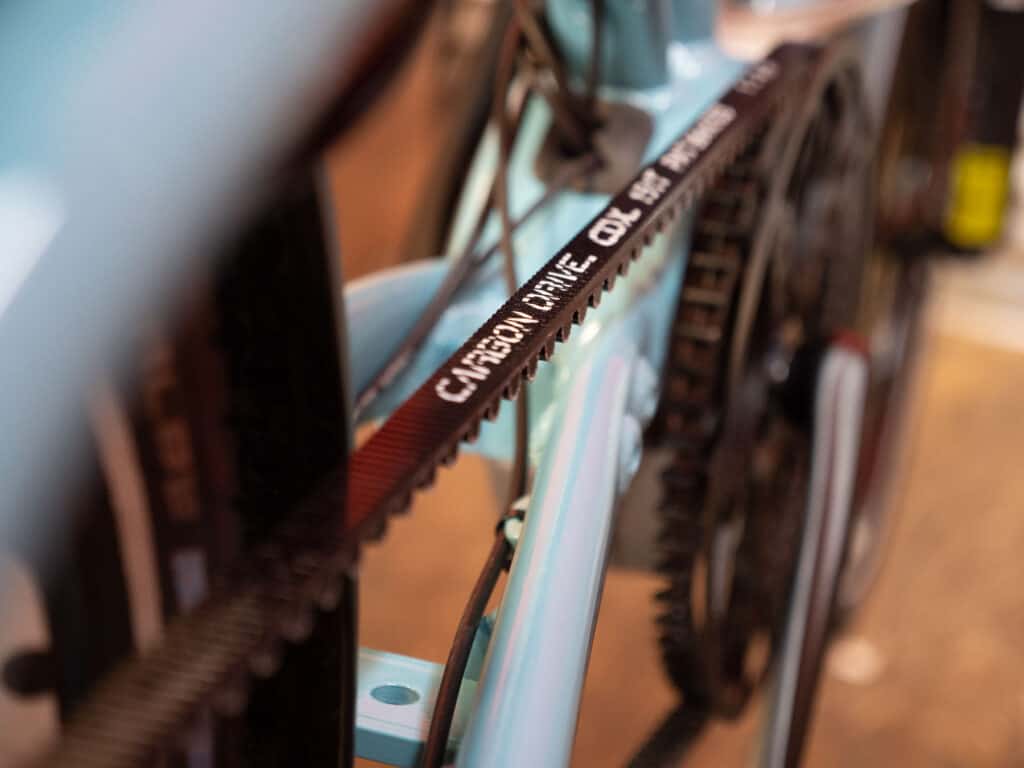

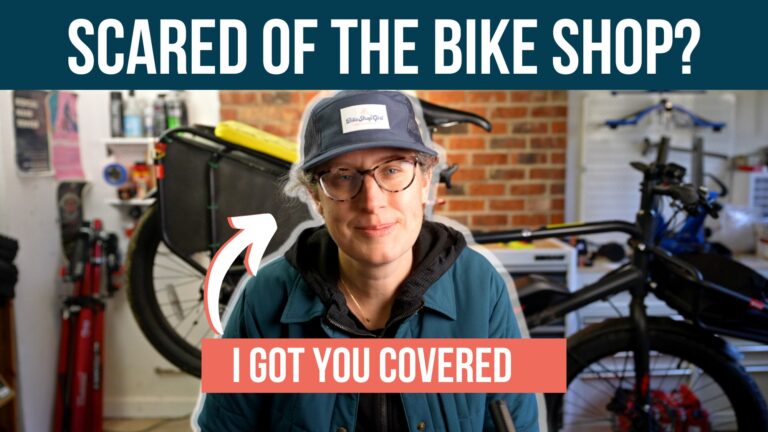

Very good start!
We have two 2019 Riese & Müller Nevo Rohloff GX bikes with Gates belts. Both have about 14,000 miles. First of all, we LOVE the Gates/Rohloff combo and now find derailleurs and chains woefully primitive – and expensive due to regular replacement of the chain and cogs.
Our experiences with belt drive:
1) Don’t ever lube the belt – just not needed. The only time we ever had noise, was due to improperly torqued lock rings at the cog/chainring – which caused a “clicking” sound when pedaling. Those lock rings did not feel loose, but once torqued to spec all noise abated.
2). The belts last 7 times (so far!) longer than a chain. Our belts and cogs show little wear at 14k miles.
3) Most bike shops have little experience with belt drive and don’t know how to diagnose issues. Our bike shop (Propel) was finally able to figure out the belt lock ring issue, but it took them a while – and they sell/service a lot of belt drive bikes.
4) It is very hard to damage a belt. I’m a very large, heavy rider built like an NFL lineman. The Gates belt has stood up to everything I and the Bosch CX motor can throw at it.
5) Belts are very tolerant of tension. I use the tension app occasionally, but the tension has to be way off to create an issue.
6) Way easier to remove the rear wheel with a belt compared to a chain with derailleur. We have vertical dropouts and there is no need to relieve the belt tension to get the wheel on or off. (The only trouble spot is actually the Rohloff E-14 cable connector which gets very tight with age.)
Thanks for this!
I could not find “ try a silicone spray that Gates recommends” on Gates’ site. What would you recommend for dry dusty environment?
Pingback: Tern GSD Gen 2 Models Explained - Which one is for you?
Could I add a belt drive to my e-bike if it has an internal hub? Specialized SL como if you want to answer the question more specifically. Overall with a chain, I still love the hub – it has a cleaner more modern look.